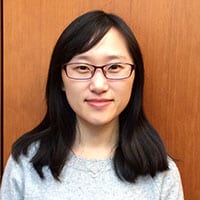Research Summary
Autophagy is a highly conserved intracellular catabolic process during which the cytoplasmic components including protein aggregates and damaged organelles are sequestered by the double-membrane vesicles called autophagosomes and delivered to lysosomes for degradation and recycling. My previous work has been focused on the molecular mechanism and function of autophagy. Eukaryotic cells initiate autophagy as an important degradation pathway to cope with the lack of external nutrients, which requires the activation of the NAD+-dependent deacetylase Sirt1. However, how Sirt1 is rapidly activated in this context remains unclear. I have dissected the underlying mechanism and identified that the conventional glycolic enzyme GAPDH is a critical mediator of Sirt1 activation and autophagy initiation.
A set of autophagy related proteins have been identified to be involved in autophagy and their functions and structures have been partially solved. However, the mechanisms underlying autophagosome formation and maturation remain largely unknown. Now, I am studying the architecture of the autophagy related protein complexes, and trying to figure out the detailed mechanisms through a comprehensive approach which combines biochemical, structural, and functional analyses.
Impact in China
Dysfunction of autophagy is linked to a wide range of human diseases including cancer, cardiovascular, and neurodegenerative syndrome, which are common in China. With the training of the world’s leading experts in membrane structural biology and utilizing the most advanced technologies at UC Berkeley, I hope to provide new insights into our understanding of the alternative autophagy pathway in these diseases and can provide promising biomarkers and targets for clinic diagnosis and therapy.
Publications
- Chang CM, Su H, Zhang DH, Wang Y, Shen QH, Liu B, Huang R, Zhou TH, Peng C, Wong C, Shen HM, Lippincott-Schwartz J, Liu W*. (2015) AMPK-dependent phosphorylation of GAPDH triggers Sirt1 activation and is necessary for autophagy upon glucose starvation. Mol Cell 60:930-940.
- Feng WF#, Chang CM#, Luo DJ, Su H, Yu SS, Hua W, Chen ZH, Hu H, Liu W*. (2014) Dissection of autophagy in human platelets. Autophagy 10:642-651. (#Co-first author)
- Huang R, Xu YF, Qian JL, Wan W, Liu B, Chang CM, Zhou TH, Lippincott-Schwartz J, Liu W*. (2015) Deacetylation of nuclear LC3 drives autophagy initiation under starvation. Mol Cell 57:456-466.
- Liu B, Fang MD, Hu Y, Huang BS, Li N, Chang CM, Huang R, Xu X, Yang ZG, Chen Z, Liu W*. (2014) Hepatitis B virus X protein inhibits autophagic degradation by impairing lysosomal maturation. Autophagy 10:416-430.
- Guo YJ, Chang CM, Huang R, Liu B, Bao L, Liu W*. (2012) AP1 is essential for generation of autophagosomes from trans-Golgi network. J Cell Sci 125:1706-1715.
